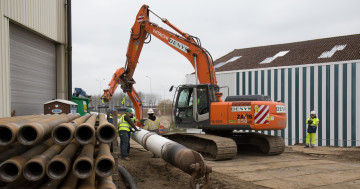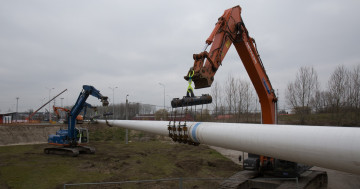

Residual heat as a renewable energy source
Questions? Let's get in touch.
Heat network between Stora Enso and Volvo Cars Ghent
Stora Enso and Volvo Cars Gent launched a collaboration in 2018 to build an underground heat network to use residual heat as a renewable energy source. Stora Enso, a global supplier of sustainable packaging and materials, wanted to connect their site in Evergem to Volvo Cars Gent, so that recovered residual heat from biomass could be efficiently used to dry cars in the paint and lacquer department. Antea Group joined the project in order to achieve the sustainability goals of both players.


